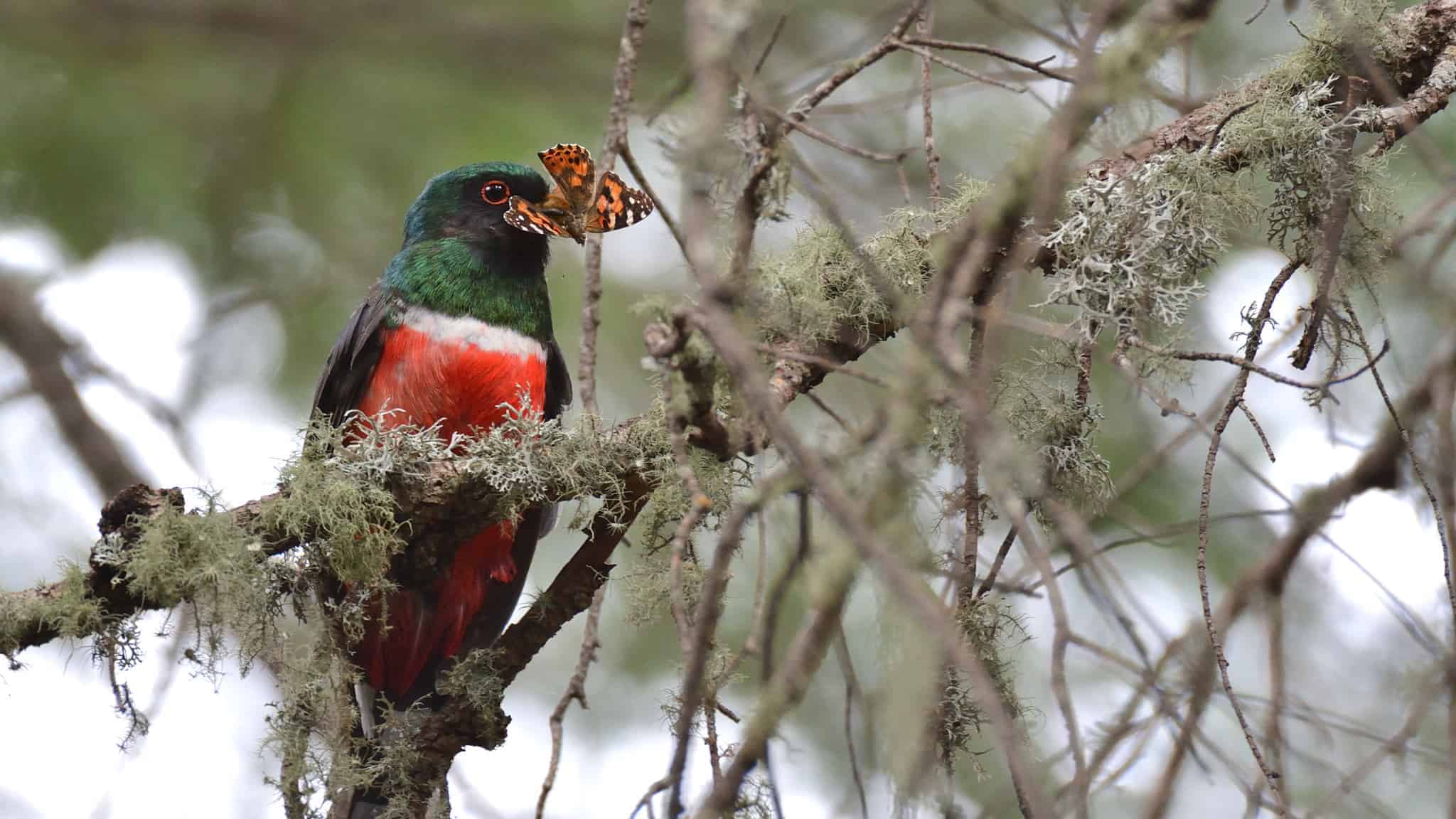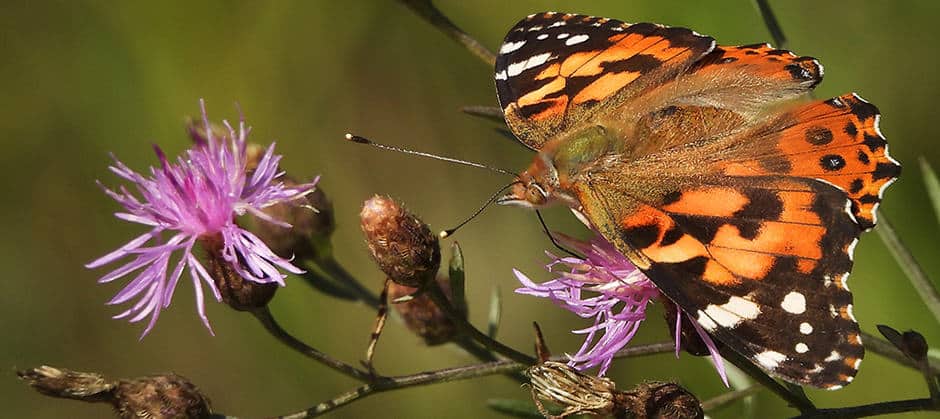Share this article
Butterfly’s diverse diet may help it survive a changing world
In 2019 and again in 2020, swarms of painted lady butterflies irrupted in the millions in Southern California. People couldn’t drive their cars without the insects crashing into their vehicles’ grills.
“Everyone thought they were monarchs, because they are orange and a butterfly,” said Jolene Saldivar, a PhD candidate at the University of California Riverside.
Little research examines this abundant species in North America, though, even though they can be found on almost every continent. Where were they traveling to? What were they eating?
Saldivar led a study published in Environmental Entomology trying to scratch the surface about these butterflies’ current habits. Using a popular citizen science platform, her team looked at what plant species they got nectar from to help them learn a little more about this less understood orange butterfly. The researchers were especially concerned about how the painted lady would fare in the face of Southern California’s ongoing drought. Usually, migration coincides with wildlflower season, Saldivar said. “We were wondering, if we don’t have great rainfall in the winter, what are they consuming in the spring?”
Working at home during the COVID-19 lockdown, Saldivar and her team realized they could study the butterflies from their desks by collecting data from iNaturalist, a community science application that allows people to document species they find around the world. “This was a great opportunity to see what they were feeding on not only in natural areas but also in people’s yards,” said Erin Wilson Rankin, an associate professor of entomology at the University of California Riverside and Saldivar’s major professor. “Jolene’s study really got at not only the native and natural areas of plants, but also the cultivated plants these butterflies were using.”

Painted ladies serve as an important source of prey for birds and other species.Credit: aguilargm/iNaturalist
To conduct the study, Saldivar first looked at how many observations of painted ladies (Vanessa cardui) occurred in California. “It turned out there were a lot,” she said. That meant going through the photos and manually confirming if the species was a painted lady, especially since she said there are a lot of look-alike species. The team also filtered out whether it was a chrysalis or caterpillar. They also took note if the butterfly had its proboscis extended, meaning it was likely consuming nectar, and what the butterflies were doing if they were not nectaring.
The team was surprised to find lots of observations even during nonirruptive years, outside the migration period. “It shows we do have potential resident species or some stragglers,” Saldivar said.
Then, the researchers identified the plant species in the photos, also by manual identification. “Some species you can’t identify by eye, and you have to look at the seeds, which we weren’t able to do with the photos, but we at least got them to genus,” Saldivar said.
They identified painted ladies feeding on nearly 200 nectar plants in shrublands. Seven of the top 10 most frequently observed plant species were native plants to California—the yellow-flowered rubber rabbitbrush, blue wild hyacinth, common fiddleneck, Fremont’s pincushion, black sage, wild heliotrope and desert lavender.
They also noted the butterflies feeding on ornamental plants used in California landscaping, like lantana, butterfly bush and rosemary, as well as flowering weeds. “This is good news,” Wilson Rankin said, “since development has removed many of the native plants the butterflies historically used.”
Anyone that has an interest can plant just a few flowering plants—even just a window box—and the butterflies can benefit, she said, and so can other species, from hummingbirds to predators that feed on butterflies.
“Painted ladies are a food source for a variety of organisms, like other insects, spiders, birds, you name it,” Saldivar said. “By protecting these species, you’re providing food for more species in the food chain.”
Header Image: A painted lady butterfly in the wild. Credit: Judith Pelley/iNaturalist








